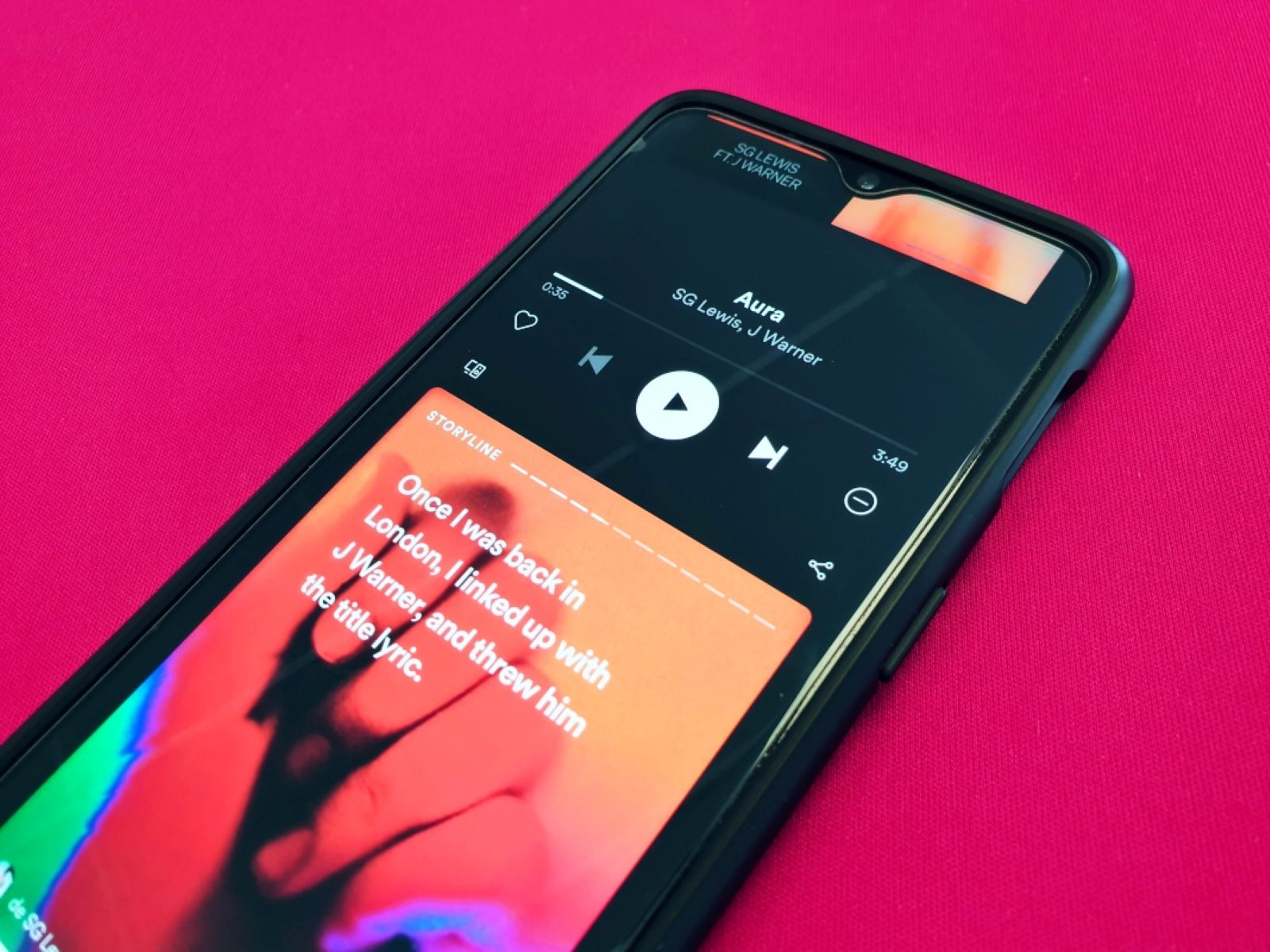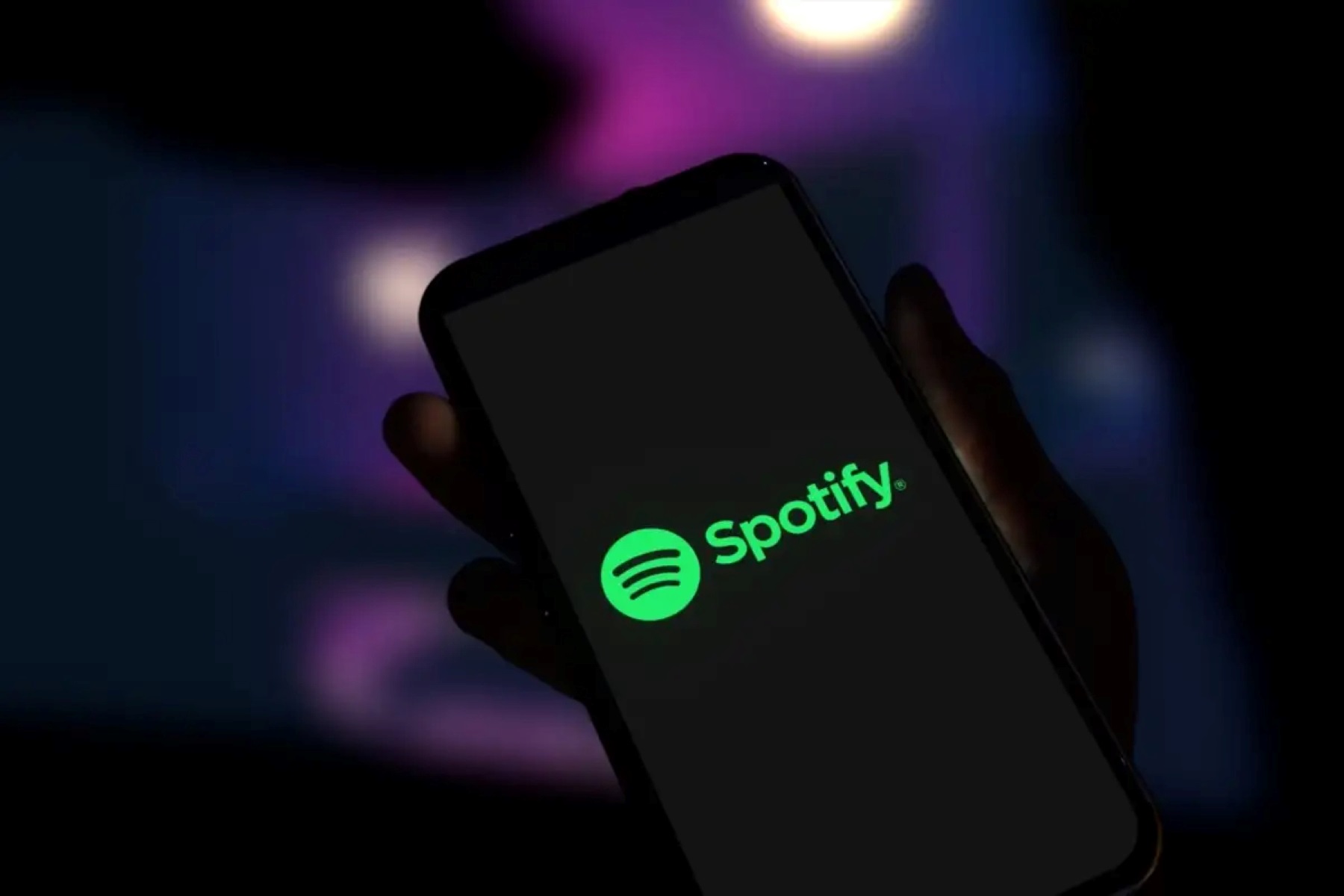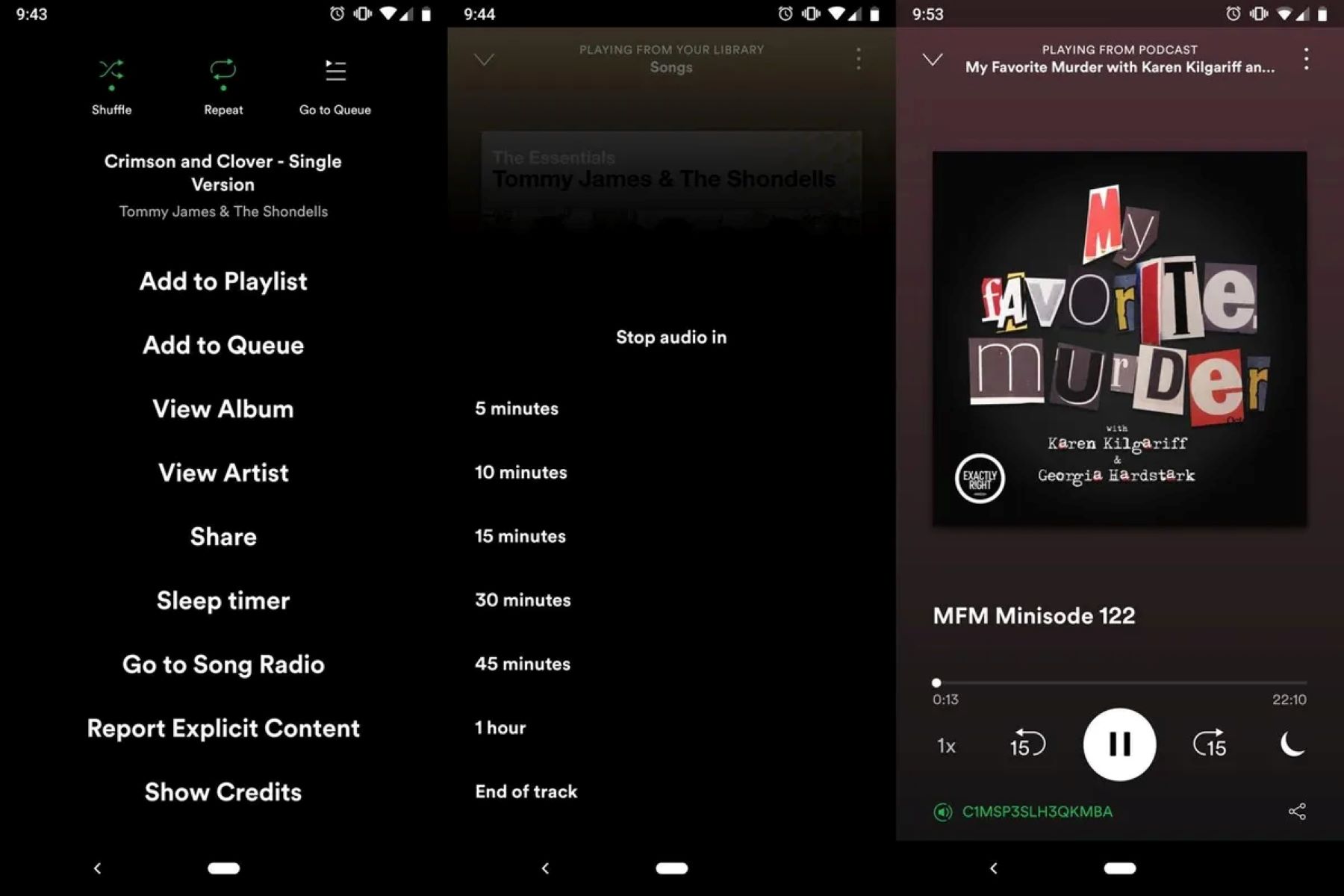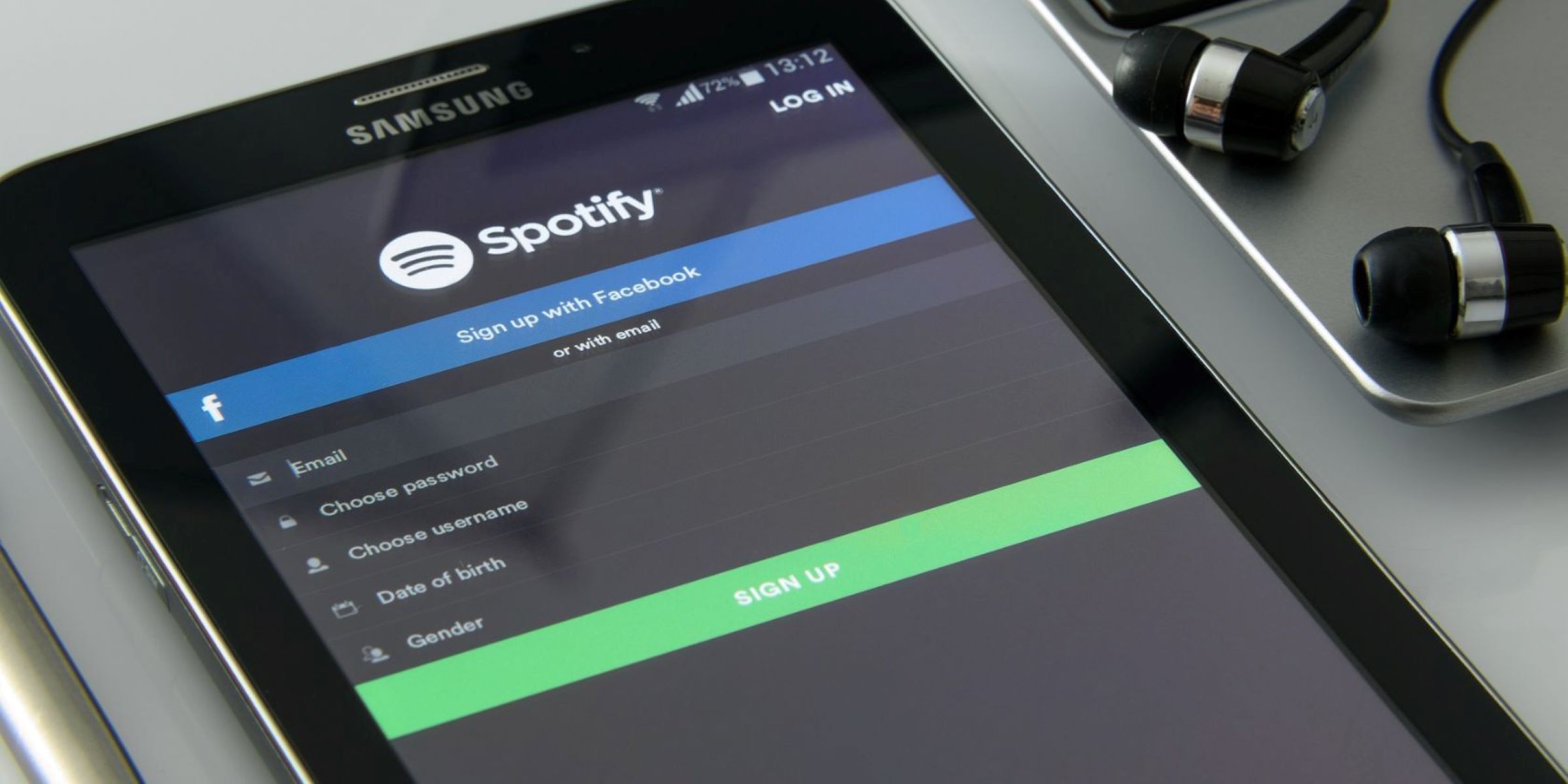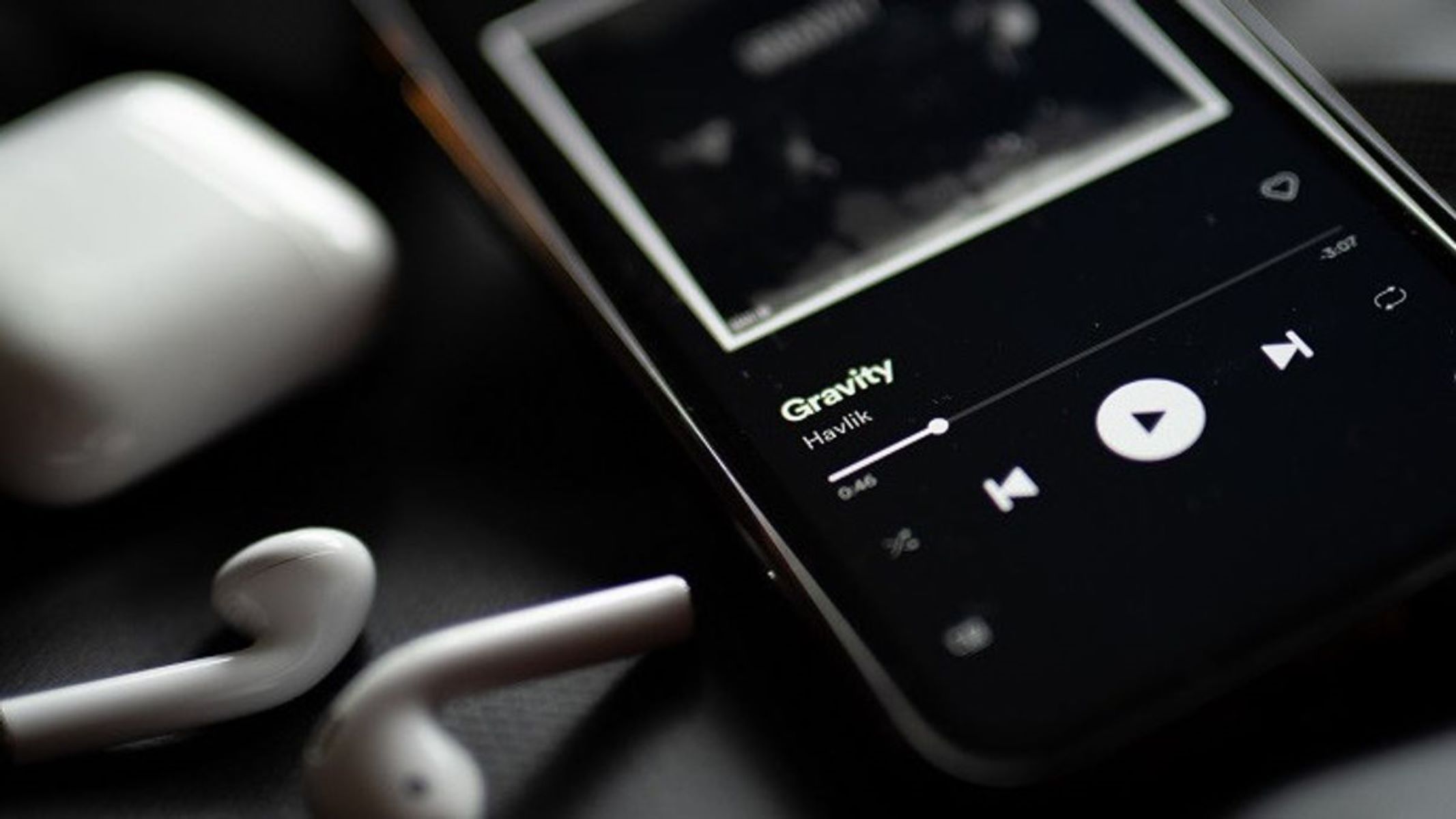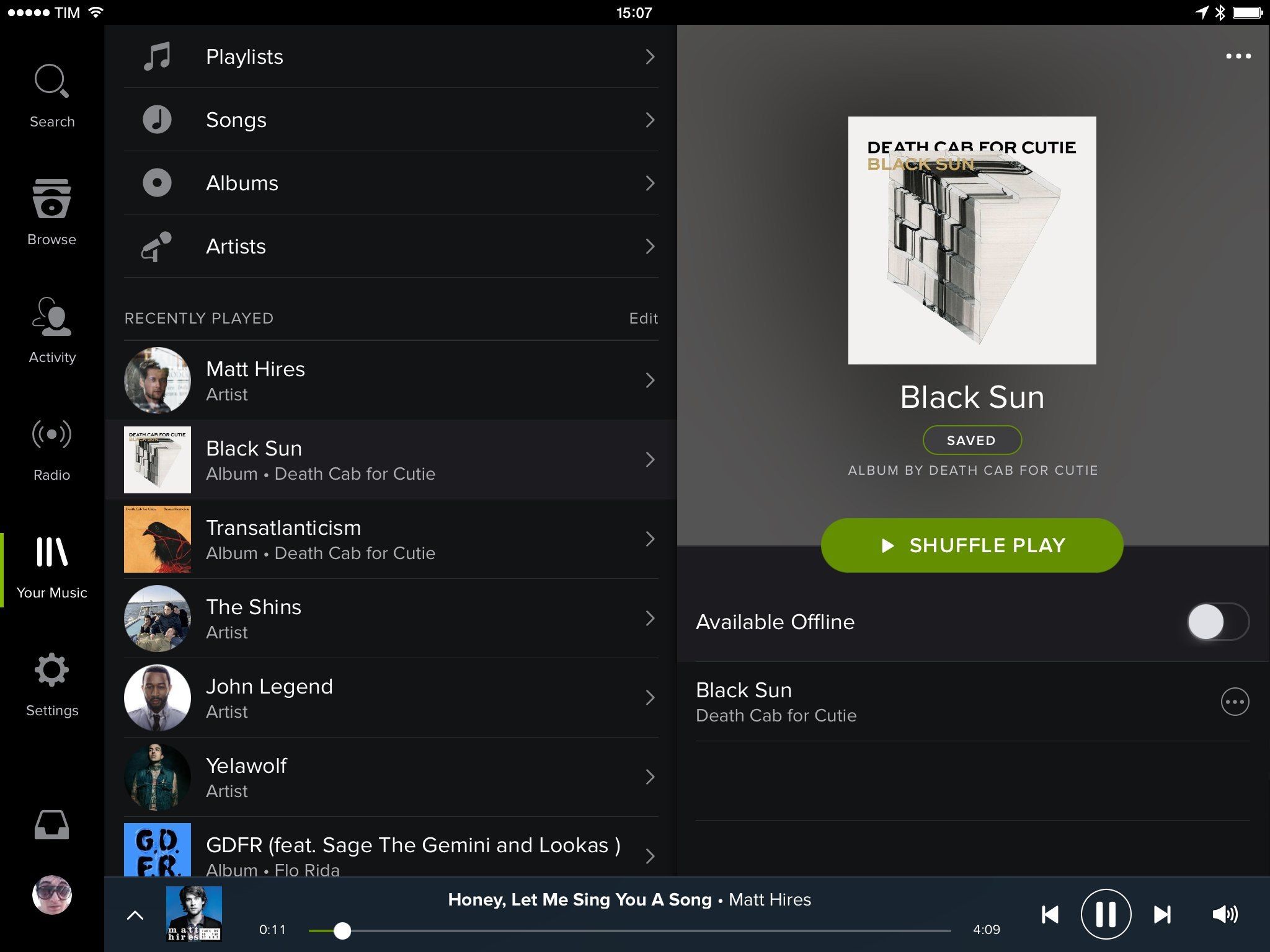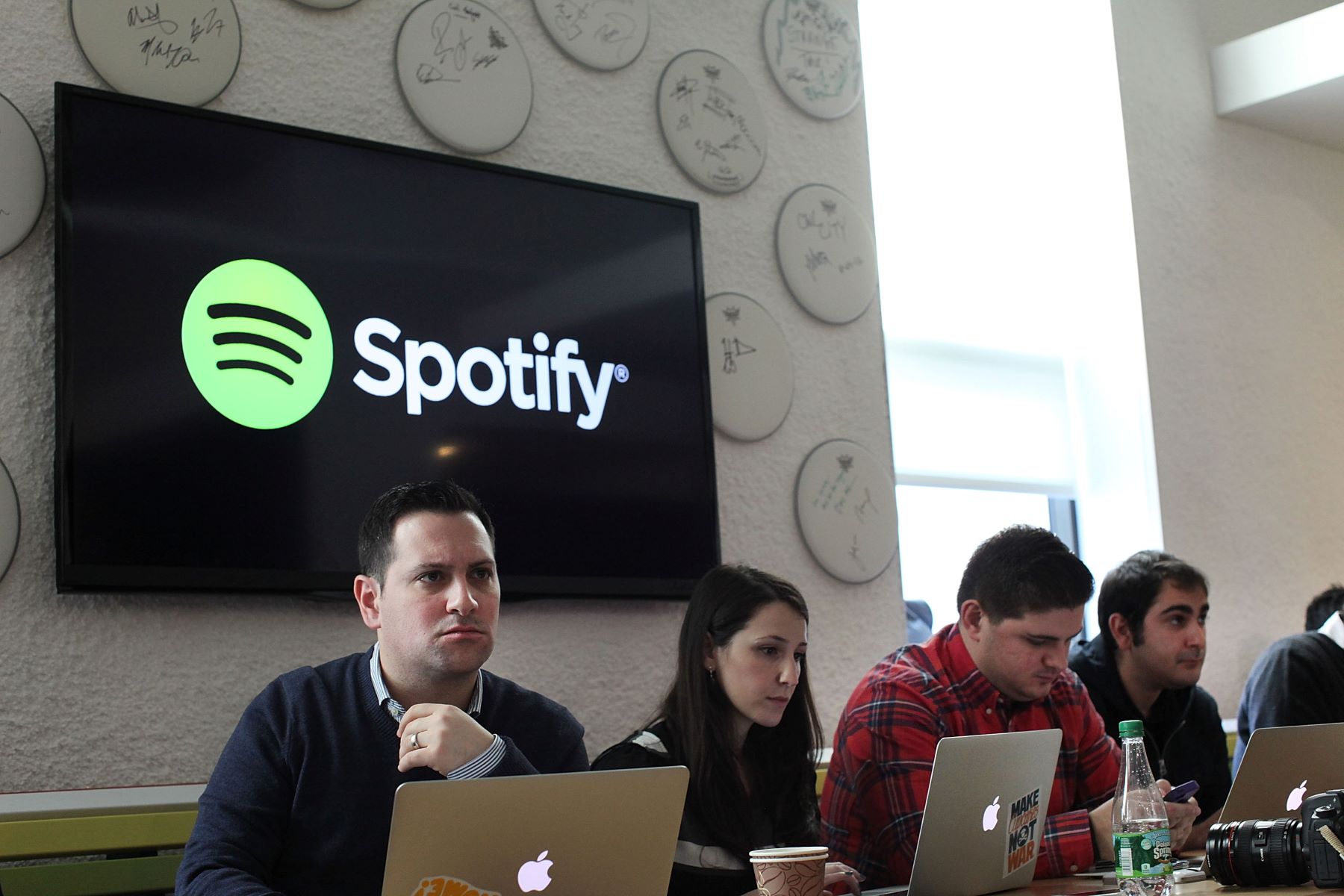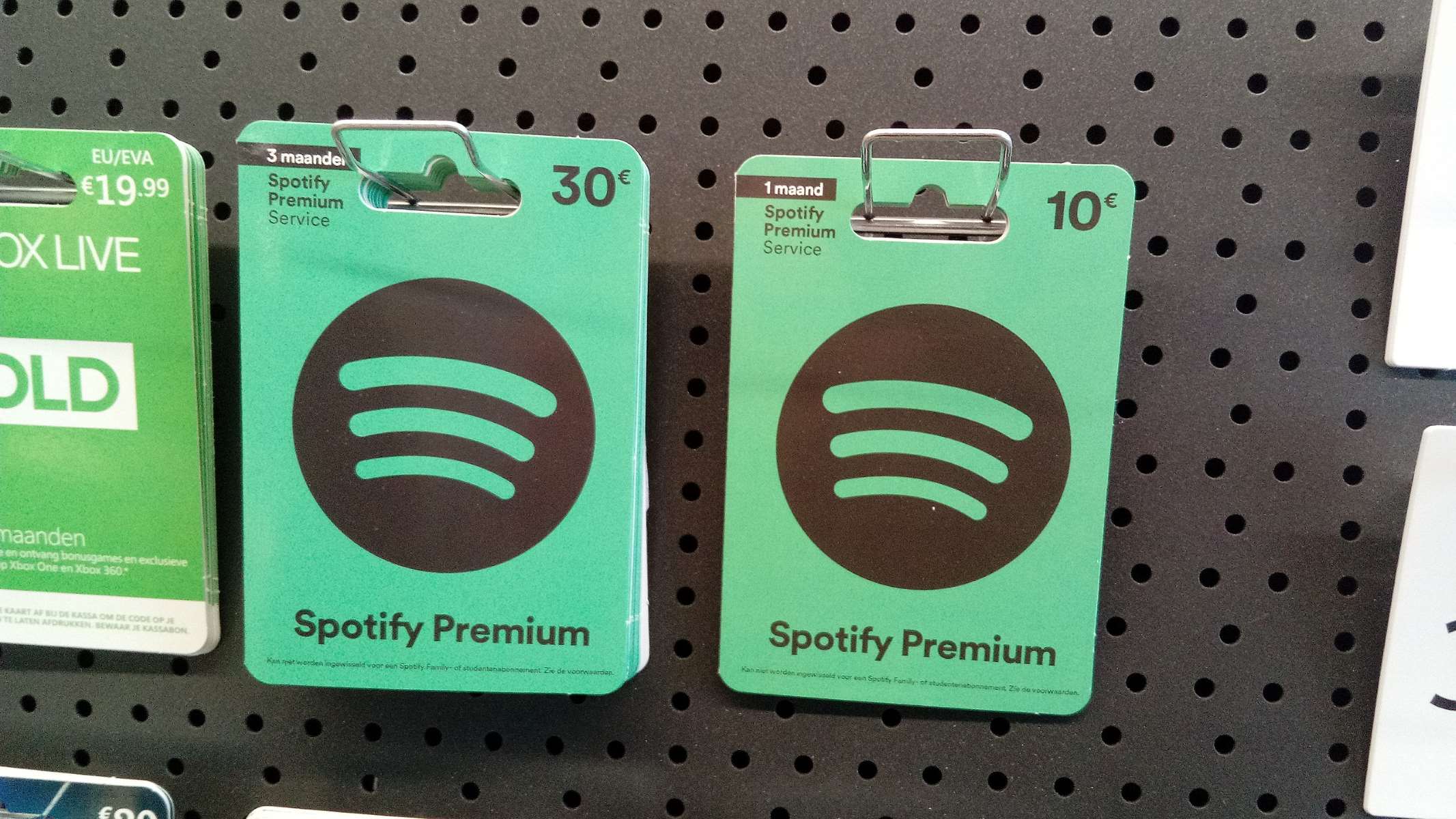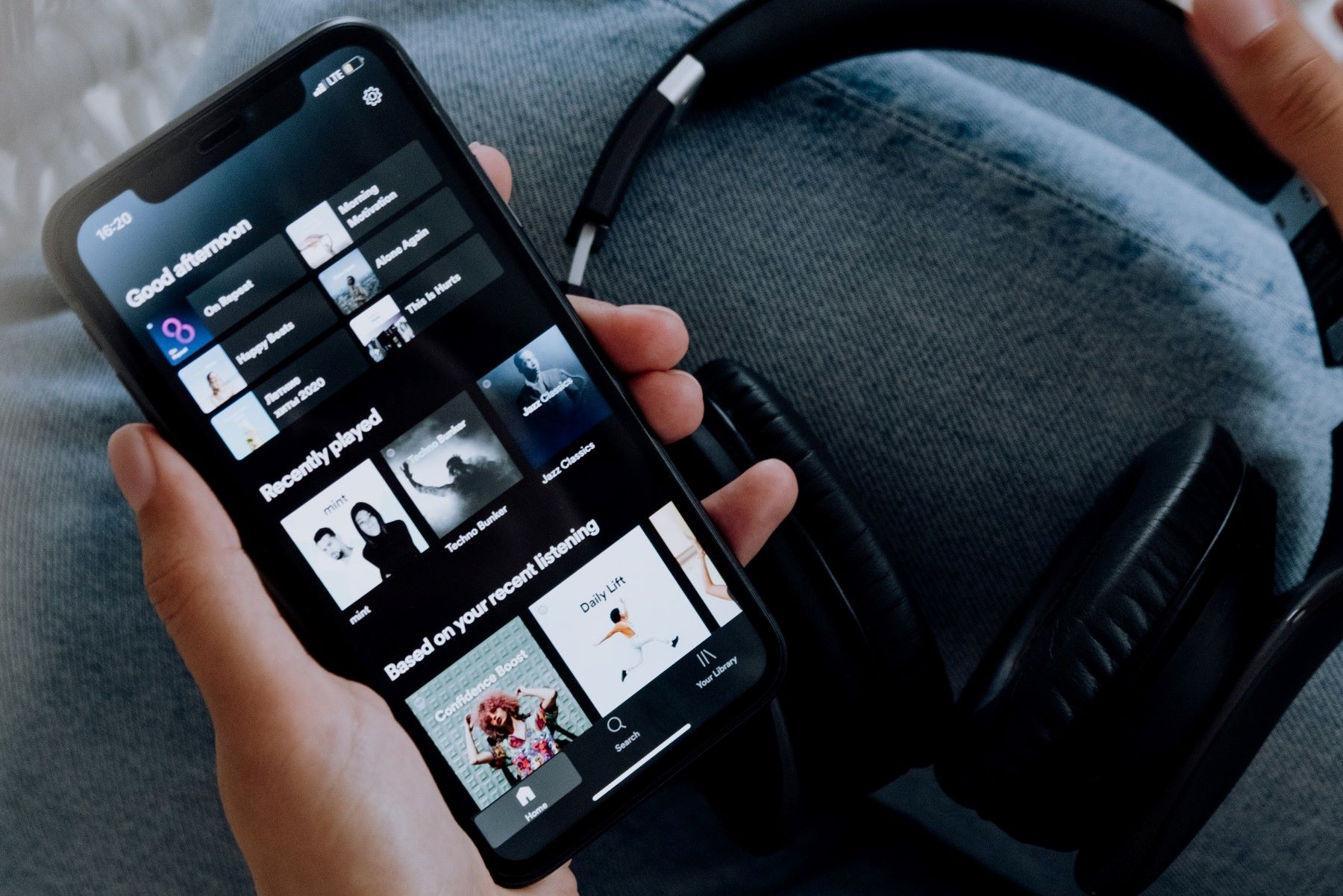Introduction
Music has become an integral part of our lives, and platforms like Spotify have revolutionized the way we access and enjoy our favorite tunes. However, there can be frustrating moments when Spotify keeps stopping, disrupting the rhythm of our music listening experience. Whether you’re in the middle of a workout or trying to relax with some soothing melodies, the sudden interruption can be quite annoying.
If you’ve been encountering this issue frequently, you’re not alone. Many Spotify users have faced the problem of constant playback interruptions, leaving them searching for answers on how to fix it. Fortunately, there are several possible causes behind Spotify stopping and various solutions to resolve the issue.
Understanding the underlying reasons for this problem is the first step towards finding a solution. In this article, we will explore the common causes of Spotify stopping and provide effective methods to troubleshoot and fix the issue. Whether you’re using Spotify on your phone, computer, or tablet, these solutions can help you get back to enjoying uninterrupted music streaming.
Possible Causes of Spotify Stopping
Before diving into the troubleshooting methods, let’s explore some of the potential causes behind Spotify continuously stopping. By understanding these reasons, you can narrow down the solutions and find the most suitable one for your situation.
1. Insufficient Internet Connection: One of the primary reasons Spotify may keep stopping is a weak or unstable internet connection. When the connection is disrupted or slows down, it can affect the seamless playback of songs.
2. Outdated Spotify App: Using an outdated version of the Spotify app can lead to compatibility issues and unexpected interruptions. It is vital to keep your Spotify app updated with the latest version to ensure smooth operation.
3. Background Apps Interference: Sometimes, other apps running in the background may interfere with Spotify’s performance, causing it to stop abruptly. These apps might consume system resources or generate conflicts that disrupt playback.
4. Cache and Data Overload: Over time, the cache and data accumulated by the Spotify app can become overloaded, leading to performance issues. This can cause the app to stop unexpectedly during playback.
5. Corrupted Files: If the music files themselves are corrupted or incomplete, it can result in Spotify stopping. This problem may occur if the files were not properly downloaded or if they have been damaged.
6. Device Compatibility Issues: In some cases, Spotify may have compatibility issues with the device you are using. This can result in the app crashing or stopping frequently.
These are just a few possible causes of Spotify stopping. By identifying the root cause behind the issue, you can apply the appropriate troubleshooting methods to resolve the problem effectively. In the following sections, we will discuss how to fix Spotify stopping issues based on these potential causes.
Insufficient Internet Connection
One of the most common reasons for Spotify stopping is an inadequate internet connection. When the connection is weak or unstable, it can lead to interrupted playback and frequent stops. To troubleshoot this issue, here are a few steps you can take:
1. Check Your Internet Speed: Start by testing the speed of your internet connection. You can do this by visiting a website or using an online speed testing tool. If you find that your internet speed is consistently slow or fluctuating, contact your internet service provider for assistance.
2. Switch to a Stable Network: If you’re using Spotify on a mobile device, consider switching from cellular data to a stable Wi-Fi network. Wi-Fi networks generally offer a more reliable and faster connection, which can help prevent playback disruptions.
3. Reset Your Router: Sometimes, a simple router reset can resolve connectivity issues. Unplug your router from the power source, wait for a few seconds, and then plug it back in. This can help refresh the connection and improve network stability.
4. Use Ethernet Cable: If you’re using Spotify on a computer or laptop, connecting to the internet via an Ethernet cable can provide a more stable and consistent connection compared to Wi-Fi. This can help prevent playback interruptions caused by weak wireless signals.
5. Limit Bandwidth Usage: If multiple devices are connected to the same network and consuming a large amount of bandwidth, it can affect the stability of your connection. Consider limiting the bandwidth usage of other devices while using Spotify to ensure a smoother streaming experience.
By taking these steps, you can improve the stability and strength of your internet connection, reducing the chances of Spotify continuously stopping. However, if the issue persists even with a strong internet connection, it’s necessary to explore other potential causes and solutions.
Outdated Spotify App
An outdated Spotify app can often be a reason for the frequent stopping of the music playback. Developers regularly release updates to improve performance, fix bugs, and ensure compatibility with the latest devices and operating systems. To resolve the issue of Spotify stopping, follow these steps to update your Spotify app:
1. Check for Updates: Open the app store on your device and search for Spotify. If there is an available update, you will see an option to update the app. Tap on it to initiate the update process.
2. Automatic Updates: Ensure that you have enabled automatic updates for your apps on your device. This way, you don’t have to manually check for updates, and your Spotify app will be updated automatically whenever a new version is available.
3. Clear App Cache: Sometimes, an accumulation of cache files can cause issues with app updates. To clear the cache for the Spotify app, go to the settings on your device and find the Apps or Application Manager section. Locate Spotify and tap on Clear Cache. This will remove any stored data that may be interfering with the app’s performance.
4. Reinstall the App: If updating the Spotify app doesn’t resolve the stopping issue, try uninstalling and reinstalling the app. This ensures that you have the latest version installed on your device and can often fix any underlying software issues that might be causing the interruptions.
By keeping your Spotify app up to date, you can benefit from the latest features and improvements while decreasing the likelihood of playback interruptions. Always check for app updates regularly and make sure to install them promptly to maintain a smooth and uninterrupted music streaming experience.
Background Apps Interference
Background apps running on your device can sometimes interfere with the performance of Spotify, leading to frequent stops in playback. These apps may consume system resources, generate conflicts, or cause interruptions in music streaming. Follow these steps to address background app interference:
1. Close Unnecessary Apps: Close any unnecessary apps running in the background that may be hogging system resources. On most devices, you can access the app switcher by swiping up or pressing the square button. Then, swipe away or close the apps that you are not actively using.
2. Disable Battery Saving Mode: Some devices have a battery-saving mode that restricts app activities in the background. While this mode can help conserve battery life, it may also interfere with Spotify’s playback. If you’re experiencing frequent stops, check if your device is in battery-saving mode and disable it.
3. Disable Data Saver Mode: Data saver mode on some devices limits the background data usage of apps, which can impact Spotify’s ability to stream music smoothly. Disable the data saver mode in your device settings to ensure uninterrupted playback.
4. Restart Your Device: Sometimes, restarting your device can help clear any temporary glitches caused by background apps. Try restarting your device and then launch Spotify to see if the stopping issue persists.
5. Update Background Apps: Ensure that all your background apps are up to date. Developers often release updates to fix bugs and improve performance. Keeping your apps updated can help prevent any conflicts or compatibility issues with Spotify.
By taking these steps, you can minimize the interference caused by background apps and improve the overall performance of Spotify. If the stops in playback continue even after closing unnecessary apps, it may be necessary to explore other potential causes and solutions.
Cache and Data Overload
Over time, the cache and data accumulated by the Spotify app can become overloaded, leading to performance issues and frequent stops in playback. Clearing the cache and data can help resolve this problem. Here’s how to do it:
1. Clear Cache: Open the settings on your device and go to the Apps or Application Manager section. Find Spotify in the list of installed apps and tap on it. Look for the option to clear the cache and tap on it. This will remove any temporary files and data that may be causing playback interruptions.
2. Clear Data: In the same settings menu for Spotify, you can also find the option to clear data. This will delete all Spotify app data, including your offline playlists and settings. Keep in mind that clearing data will require you to log back into the app and re-download your offline content.
3. Disable Offline Mode: If you have enabled offline mode in the Spotify app, it may be contributing to cache and data overload. Disable offline mode in the app settings to prevent unnecessary strain on the app’s resources.
4. Adjust Download Quality: Spotify allows you to adjust the quality of music downloads. Higher quality downloads consume more space and can contribute to cache and data overload. Consider lowering the download quality to reduce the amount of data stored and potentially alleviate playback issues.
5. Limit Offline Downloads: If you tend to download a large number of songs for offline listening, it can overload the cache and data storage. Limit the number of songs you download for offline use to avoid unnecessarily burdening the app with excessive data.
By clearing the cache and data periodically and managing your offline content wisely, you can prevent cache and data overload issues that lead to frequent stops in Spotify playback. If the problem persists despite these efforts, it may be necessary to explore other potential causes and solutions.
Corrupted Files
Corrupted files can also be a culprit behind Spotify stopping frequently. If the music files themselves are incomplete or damaged, it can disrupt the playback and lead to interruptions. Here’s how you can address the issue of corrupted files:
1. Re-download the Songs: If you notice that only specific songs are causing Spotify to stop, it’s possible that those files are corrupted. Remove those songs from your playlists or saved library and re-download them again to replace any potential corrupted versions.
2. Delete and Re-add Playlists: If an entire playlist is causing issues, try deleting the playlist and creating a new one. This will remove any potential corrupted tracks and ensure that you have a fresh and clean playlist to enjoy without interruptions.
3. Check the File Format: Ensure that the file format of your music is compatible with Spotify. Spotify supports various file formats like MP3, M4A, and OGG. If you have music files in an unsupported format, you may need to convert them to a compatible format using audio conversion software.
4. Verify Local Files: If you have added local files to your Spotify library, it’s important to verify that those files are not corrupted. Check the original files on your device and make sure they are complete and free of any errors or disruptions.
5. Clear Local Files Cache: If you have recently added or removed local files from your Spotify library, it may be necessary to clear the local files cache. Go to Spotify settings, select Local Files, and toggle off the options to remove any cached files. Then, toggle the options back on and let Spotify re-scan your device for local files.
By addressing any issues caused by corrupted files, you can ensure a smoother music streaming experience on Spotify. If the stopping issue persists despite these efforts, it may be necessary to explore other potential causes and solutions.
Device Compatibility Issues
Device compatibility issues can also contribute to Spotify stopping frequently. In some cases, the Spotify app may not be fully compatible with the device you’re using, resulting in playback interruptions. Here are some steps you can take to address device compatibility issues:
1. Update Your Device: Ensure that your device is running the latest operating system version. Software updates often include bug fixes and performance improvements that can help resolve compatibility issues with apps like Spotify.
2. Check Device Specifications: Verify if your device meets the minimum requirements for running the Spotify app. This includes factors such as the amount of RAM, processor speed, and available storage space. Insufficient specifications can lead to poor app performance and frequent stops.
3. Free Up Storage Space: If your device is low on storage space, it can affect the performance of Spotify. Delete unnecessary files, apps, or media to free up sufficient space for the app to operate smoothly.
4. Restart Your Device: Restarting your device can help refresh its system and resolve any temporary glitches that may be affecting app compatibility. After restarting, launch Spotify to see if the stopping issue persists.
5. Seek Official Support: If you have tried the above steps and are still experiencing compatibility issues, reach out to the official Spotify support team. Provide them with details about your device and the issues you’re facing for further assistance and guidance.
Device compatibility issues can be frustrating, but by ensuring that your device is up to date, has sufficient specifications, and has enough storage space, you can minimize the chances of Spotify stopping. If the problem continues despite these efforts, it may be necessary to explore other potential causes and solutions.
How to Fix Spotify Stopping Issues
Experiencing frequent stops in Spotify can be incredibly frustrating. To address and resolve this issue, here are some effective methods you can try:
1. Check Your Internet Connection: Ensure that you have a stable and reliable internet connection. Weak or intermittent connectivity can cause Spotify to stop abruptly. Switch to a stable network and check for any internet connectivity issues.
2. Update Spotify App: Keep your Spotify app updated to the latest version. Developers regularly release updates that fix bugs, improve performance, and ensure compatibility with the latest devices and operating systems. Check for updates in your app store and install any available updates.
3. Close Background Apps: Close any unnecessary apps running in the background that may be consuming system resources or interfering with Spotify’s performance. This can help minimize conflicts and ensure smoother playback.
4. Clear Cache and Data: Over time, the cache and data accumulated by the Spotify app can become overloaded, leading to performance issues. Clear the cache and data of the app to remove any temporary files or data that may be causing interruptions.
5. Reinstall Spotify: If the above solutions haven’t resolved the stopping issue, try uninstalling and reinstalling the Spotify app. This can help eliminate any underlying software issues that may be causing the problem.
6. Check Device Compatibility: Verify that your device meets the minimum requirements for running the Spotify app. Update your device’s operating system and ensure that you have sufficient storage space and specifications to support the app’s smooth operation.
By applying these methods, you can troubleshoot and fix Spotify stopping issues. However, if the problem persists, it is advisable to reach out to Spotify’s official support team for further assistance and guidance. They can provide specific solutions based on your device and unique circumstances.
Check Internet Connection
One of the most common causes of Spotify stopping issues is an unstable or weak internet connection. When the connection is disrupted or slows down, it can lead to interruptions in music playback. To ensure a smooth streaming experience, follow these steps to check and improve your internet connection:
1. Check Your Network Signal: Ensure that you have a strong and stable network signal on your device. If you’re using Wi-Fi, move closer to the router or consider using a Wi-Fi range extender to strengthen the signal in the area where you typically use Spotify.
2. Restart Your Router: Sometimes, a simple router restart can resolve temporary connectivity issues. Unplug the power source of your router, wait for about 30 seconds, and then plug it back in. This can help refresh the connection and improve signal strength.
3. Test Your Internet Speed: Use an online speed testing tool to check the speed of your internet connection. Ensure that the download and upload speeds are within an acceptable range for streaming music. Contact your internet service provider if you notice significantly slow speeds.
4. Switch to a Different Network: If you’re using cellular data, switch to a stable Wi-Fi network. Wi-Fi networks generally offer a more reliable and faster connection, minimizing the chances of Spotify stopping due to network-related issues.
5. Limit Other Bandwidth-Intensive Activities: If other devices on your network are consuming a significant amount of bandwidth, it can affect the stability of your internet connection. Limit or temporarily pause bandwidth-intensive activities like downloading large files or streaming videos while using Spotify.
6. Contact Your Internet Service Provider: If you consistently experience slow or unreliable internet connection despite trying the above steps, it’s advisable to contact your internet service provider. They can troubleshoot the connection and identify any potential issues on their end.
By checking and improving your internet connection, you can minimize the chances of Spotify continuously stopping due to network issues. However, if the problem persists even with a stable connection, it may be necessary to explore other potential causes and solutions.
Update Spotify App
Using an outdated version of the Spotify app can contribute to frequent stopping issues. Developers regularly release updates that address bugs, enhance performance, and ensure compatibility with the latest devices and operating systems. To troubleshoot this problem, follow these steps to update your Spotify app:
1. Check for App Updates: Open your device’s app store (such as the Google Play Store or Apple App Store) and search for Spotify. If there is an available update, you will see an option to update the app. Tap on it to start the update process.
2. Enable Automatic Updates: To ensure that you always have the latest version of Spotify, enable automatic updates for your apps. This way, your device will automatically download and install app updates, including Spotify, as soon as they become available.
3. Clear App Cache: Sometimes, clearing the app cache can resolve issues with app updates. Go to your device’s settings, find the Apps or Application Manager section, locate Spotify, and tap on Clear Cache. This will remove any temporary files that may be interfering with the update process.
4. Reinstall Spotify: If updating the app doesn’t resolve the stopping issue, try uninstalling and reinstalling Spotify. This not only ensures that you have the latest version installed but also helps eliminate any underlying software glitches that may be causing the problem.
5. Verify Permissions: After updating the app, make sure Spotify has the necessary permissions to access your device’s storage, media files, and network connections. Go to your device’s settings, find the Apps or Application Manager section, locate Spotify, and check if all necessary permissions are granted.
By keeping your Spotify app up to date, you can benefit from bug fixes, performance improvements, and compatibility enhancements. Regularly check for updates and install them promptly to ensure a smooth and uninterrupted music streaming experience.
Close Background Apps
Background apps running on your device can sometimes interfere with the performance of Spotify, causing it to stop unexpectedly. These apps may consume system resources, generate conflicts, or disrupt the playback experience. To address this issue, follow these steps to close unnecessary background apps:
1. Access the App Switcher: On most devices, you can access the app switcher by swiping up from the bottom of the screen (on iPhones) or using the recent apps button (on Android devices). This will display a list of apps currently running in the background.
2. Close Unused Apps: Swipe left or right to navigate through the list of apps in the app switcher. Swipe up or tap on the close button to close any apps that you are not actively using or that might be running unnecessarily in the background.
3. Adjust App Permissions: Some background apps require certain permissions to function properly. Go to your device’s settings, find the Apps or Application Manager section, and review the permissions for each app. Disable any permissions that are not necessary for the app to run in the background.
4. Disable Background Refresh: On some devices, you have the option to disable background refresh for certain apps. This prevents them from running in the background and consuming system resources. Go to your device’s settings and find the app-specific settings to disable background refresh for selected apps.
5. Restart Your Device: If you’re experiencing issues with background apps even after closing them, try restarting your device. This can help clear any temporary glitches and refresh the system, ensuring smoother app performance.
By closing unnecessary background apps and managing app permissions, you can improve the performance of Spotify and reduce the occurrence of sudden stops in playback. However, if the problem persists, it may be necessary to explore other potential causes and solutions.
Clear Cache and Data
Over time, the cache and data accumulated by the Spotify app can become overloaded, leading to performance issues and frequent stops in playback. Clearing the cache and data can help resolve these issues. To do so, follow these steps:
1. Open App Settings: Go to your device’s settings and find the Apps or Application Manager section. Locate Spotify in the list of installed apps and tap on it to access the app settings.
2. Clear Cache: In the app settings for Spotify, you will find an option to clear the cache. Tap on it to remove any temporary files and data stored in the cache. Clearing the cache can help free up space and improve app performance.
3. Clear Data (optional): In addition to clearing the cache, you might also have the option to clear app data. This will delete all Spotify app data, including your offline playlists and settings. Use this option only if necessary, as it will require you to log back into the app and re-download any offline content.
4. Restart Spotify: After clearing the cache and data, exit the app settings and restart Spotify. This ensures that the app starts fresh, without any lingering data or temporary files that may have been causing issues.
5. Adjust Offline Storage: If you frequently save songs for offline listening, consider adjusting the amount of storage space allocated to offline content in Spotify’s settings. Reducing the offline storage can prevent the app from becoming overwhelmed and minimize the chances of playback interruptions.
By periodically clearing the cache and data of the Spotify app, you can optimize its performance and avoid potential issues caused by overloaded resources. However, keep in mind that clearing data will remove offline content and require you to re-download it. If the stopping issue persists after performing these steps, further troubleshooting may be necessary.
Reinstall Spotify
If you continue to experience stopping issues with Spotify, reinstalling the app can often resolve underlying software problems that may be causing the interruptions. Reinstalling Spotify ensures that you have a fresh installation and can help eliminate any corrupted or conflicting files. To reinstall Spotify, follow these steps:
1. Uninstall Spotify: On your device, go to the app settings and find Spotify in the list of installed apps. Tap on it and select the option to uninstall or remove the app. Confirm the action when prompted.
2. Restart Your Device: After uninstalling Spotify, restart your device. This helps clear any temporary system glitches and ensures that you start with a clean slate for the reinstallation process.
3. Download the Latest Version: Go to your device’s app store, such as the Google Play Store for Android devices or the Apple App Store for iOS devices. Search for “Spotify” and locate the official app. Download and install the latest version of Spotify onto your device.
4. Log in to Your Account: After reinstalling, launch Spotify and log in to your account using your username and password. If you use social media to log in, ensure that you have the necessary credentials available.
5. Download Offline Content: If you previously had offline playlists or songs, you will need to re-download them after reinstalling Spotify. Go to your playlists and select the ones you want to listen to offline. Tap on the “Download” or “Save” option to retrieve the content.
By reinstalling Spotify, you can start with a fresh installation that helps eliminate any potential software issues that may have been causing the stopping problem. However, keep in mind that reinstalling the app will remove any personalized settings, so you may need to customize the app according to your preferences again.
Check Device Compatibility
Device compatibility issues can contribute to Spotify stopping frequently. If the Spotify app is not fully compatible with your device, it can lead to playback interruptions and other performance problems. To address this, follow these steps to check your device’s compatibility:
1. Verify Operating System Compatibility: Ensure that your device is running a compatible operating system version. Check the Spotify website or app store to find the minimum operating system requirements for running the latest version of Spotify. Update your device’s operating system if necessary.
2. Check Device Specifications: Review the specifications of your device, including RAM, processor speed, and available storage space. Spotify may require certain hardware capabilities to run smoothly. If your device falls short of the recommended specifications, it might struggle to handle the app’s demands, resulting in playback interruptions.
3. Update Your Device: Keep your device’s operating system and firmware up to date. Developers often release updates that improve compatibility with apps like Spotify. Check for updates in your device’s settings and install any available updates.
4. Free Up Storage Space: Delete unnecessary files, apps, or media from your device to free up storage space. Insufficient storage can slow down your device and impact the performance of Spotify. Consider transferring large files to external storage or uploading them to cloud services to free up space.
5. Restart Your Device: Restarting your device can help resolve temporary glitches and improve performance. It clears the device’s memory and refreshes the system, potentially addressing compatibility issues that may be causing Spotify to stop frequently.
If your device is incompatible with Spotify or doesn’t meet the minimum requirements, you may need to consider using Spotify on a different device or upgrading to a more suitable device for optimal performance.
By checking device compatibility and ensuring that your device meets the necessary specifications, you can minimize compatibility-related issues that lead to frequent stops in Spotify playback. However, if the problem persists, additional troubleshooting steps may be necessary.
Conclusion
Experiencing frequent stops in Spotify can be frustrating, but by understanding the potential causes and implementing the appropriate solutions, you can resolve this issue and enjoy uninterrupted music playback. Throughout this article, we explored the various reasons why Spotify may be stopping and provided practical methods to fix the problem.
We discussed the importance of checking your internet connection and taking steps to ensure a stable and reliable connection. Upgrading to the latest version of the Spotify app was highlighted as an essential step to address compatibility issues and benefit from bug fixes and performance enhancements.
We also delved into how background apps can interfere with Spotify’s performance and explained the significance of clearing cache and data to alleviate any overload issues. Additionally, we covered the importance of addressing corrupted files and checking device compatibility to tackle stopping problems effectively.
It’s important to note that while these solutions are effective in most cases, there could be other factors contributing to Spotify stopping that require more advanced troubleshooting or even consultation with Spotify’s support team.
By taking the time to identify the specific cause of Spotify stopping and applying the appropriate solutions, you can restore smooth playback and enjoy your favorite music without interruptions. Keep in mind that each individual’s situation may vary, so it’s crucial to experiment with different solutions and find what works best for you.
Music is meant to be enjoyed without any interruptions, and with the right troubleshooting methods, you can reclaim a seamless and uninterrupted music streaming experience with Spotify.







